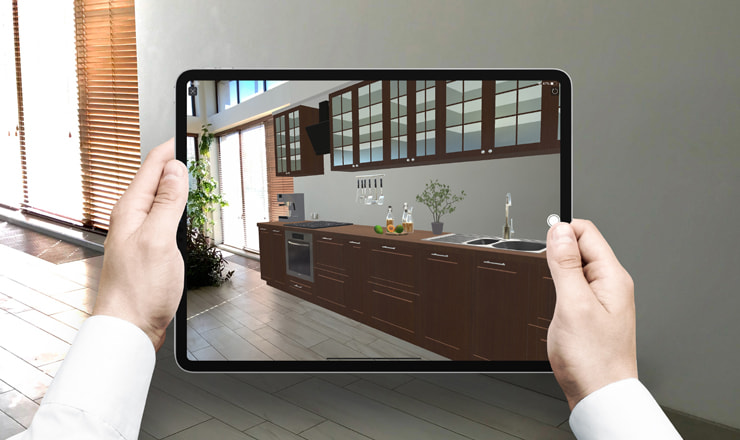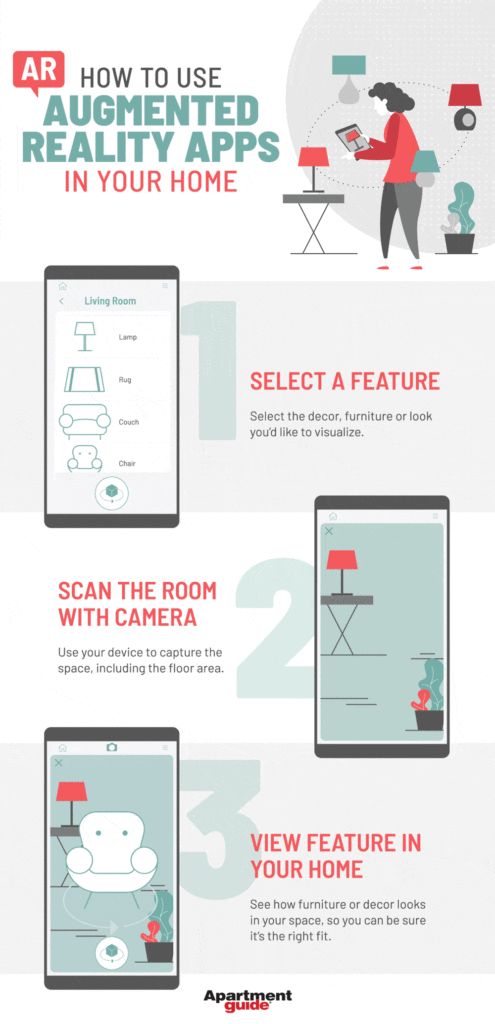Augmented reality (AR) has revolutionized the way we interact with the world around us. It has transformed industries such as gaming, education, and marketing, and has opened up endless possibilities for designers to create immersive experiences. However, designing augmented reality is not as simple as creating a 2D graphic or animation. It requires a unique set of skills and knowledge to create a seamless and engaging AR experience.
To design augmented reality, you need to understand the technology behind it and the various tools and software available. You also need to have a clear understanding of the user experience and how your design will fit into their environment. This can range from designing interactive games to providing virtual product demonstrations for businesses. In this article, we will explore the fundamentals of designing augmented reality and provide tips and tricks to create immersive and engaging experiences.
Augmented Reality (AR) design is a process of creating digital content that is overlaid onto a physical environment. It involves developing 3D models, animations, and interactive elements to create an immersive experience for users. To design AR, you need to consider the user experience, create a storyboard, and build an interactive prototype.
- Step 1: Develop a Storyboard: Gather all the ideas you have for the AR experience and create a storyboard that outlines the user’s journey. This will help you define the visual elements and the user interactions.
- Step 2: Create 3D Models: Using a 3D modeling program like Blender or Autodesk Maya, create 3D models that represent the physical environment and the digital elements you want to add.
- Step 3: Add Animations and Interactivity: Add animations and interactions to the 3D models to create an immersive experience.
- Step 4: Test the Prototype: Test the prototype to make sure the user experience is satisfactory. Make adjustments as needed.
- Step 5: Publish the Experience: Once the prototype has been tested, publish the experience for users to access.

Designing Augmented Reality
Augmented Reality (AR) is an advanced technology that overlays digital content on a user’s view of the world. It is used to create a more interactive and engaging experience for users. AR is becoming increasingly popular in applications such as gaming, education, and retail. This article will discuss how to design augmented reality applications.
Steps for Designing an Augmented Reality Application
The first step in designing an augmented reality application is to define your goals and objectives. This includes determining the purpose of the application, the user experience you want to provide, and the features you want to include. You should also consider the technology you will need to use, such as hardware, software, and platforms.
Once you have established your goals and objectives, you can begin to design the user interface of your augmented reality application. The interface should be designed to be intuitive and user-friendly. You should consider the size and resolution of the device, as well as the type of input methods the user will be using. Additionally, you should consider how the user will interact with the augmented reality elements.
Testing and Iterating the Design
Once the design of the augmented reality application is complete, it is important to test it to ensure it works correctly. This can be done through user testing, which can help identify any potential issues with the application. Additionally, it is important to iterate the design to ensure the user experience is as optimal as possible. Iterating the design can involve adding new features, adjusting existing features, or removing features that are not working as intended.
Once the application has been tested and iterated, it is important to ensure that it is compatible with the various platforms it is intended to be used with. This includes testing the application on multiple devices, as well as ensuring it is compatible with the various operating systems. Additionally, it is important to ensure the application is optimized for each platform, as different platforms may require different optimizations.
Deployment of the Application
Once the application is ready for deployment, it is important to ensure that it is properly configured for the target platform. This includes setting up authentication and authorization, as well as configuring the application for the platform’s store. Additionally, it is important to ensure that the application is properly tested before being deployed. This can involve running performance tests, security tests, and compatibility tests.
Once the application is deployed, it is important to monitor its performance and user feedback. This can involve collecting user data, such as usage statistics, and using this data to make improvements to the application. Additionally, it is important to respond to user feedback in order to ensure the application is meeting their needs.
Marketing the Application
Once the application is deployed, it is important to market it in order to reach the intended audience. This can involve creating promotional materials, such as videos, images, and other content. Additionally, it is important to consider the various channels that can be used to promote the application, such as social media or advertising. Finally, it is important to measure the effectiveness of the marketing efforts, in order to ensure the application is reaching the intended audience.
Frequently Asked Questions about Augmented Reality Design
Augmented Reality (AR) is a technology that allows us to add digital elements to the real world. With its help, it can be used to create enhanced user experiences and to provide new ways of interacting with the environment. Augmented Reality Design is the process of creating these enhanced user experiences and interactions.
What is Augmented Reality Design?
Augmented Reality Design is the process of creating user experiences that add digital elements to the real world. This can be done through the use of various technologies, such as 3D models, video, audio, and other interactive elements. Augmented Reality Design is used to create enhanced user experiences that can help improve the user’s understanding of the environment, as well as providing new ways of interacting with it.
What tools are used in Augmented Reality Design?
The tools used in Augmented Reality Design vary depending on the project. Generally speaking, the most common tools used are 3D modeling software, video editing software, audio editing software, and development frameworks. With these tools, designers can create 3D models, manipulate video, create audio effects, and create interactive experiences.
How do I get started with Augmented Reality Design?
Getting started with Augmented Reality Design can seem daunting, but it doesn’t have to be. The first step is to familiarize yourself with the various technologies involved, such as 3D modeling, video editing, and development frameworks. Once you’ve done that, you can begin to experiment with creating your own projects. It’s important to keep experimenting and learning as you go, as this will help you become more comfortable with the tools and techniques involved.
What are the benefits of Augmented Reality Design?
Augmented Reality Design can offer a variety of benefits. It can be used to create enhanced user experiences and to provide new ways of interacting with the environment. It can also help improve the user’s understanding of the environment, as well as providing new ways of exploring it. Additionally, Augmented Reality Design can be used to create immersive experiences that can be shared across multiple platforms.
What are the challenges of Augmented Reality Design?
Augmented Reality Design is a complex process, and there are several challenges that designers may encounter. One of the main challenges is creating experiences that are both immersive and intuitive. Additionally, Augmented Reality Design requires a good understanding of the technologies involved, such as 3D modeling, video editing, and development frameworks. There is also the challenge of creating experiences that are both engaging and scalable, as well as creating experiences that are optimized for multiple platforms.
In conclusion, designing augmented reality experiences requires a combination of technical expertise, creative vision, and an understanding of user behavior. It is a rapidly evolving field that has the potential to revolutionize the way we interact with digital content. As designers, our role is to push the boundaries of what is possible and create experiences that are both engaging and intuitive.
To be successful in designing augmented reality experiences, it is important to stay up-to-date with the latest trends and technologies. This involves constant experimentation and a willingness to take risks. By incorporating user feedback and constantly iterating on our designs, we can create experiences that truly resonate with our audience. With the right approach and mindset, the possibilities for designing augmented reality experiences are endless.


